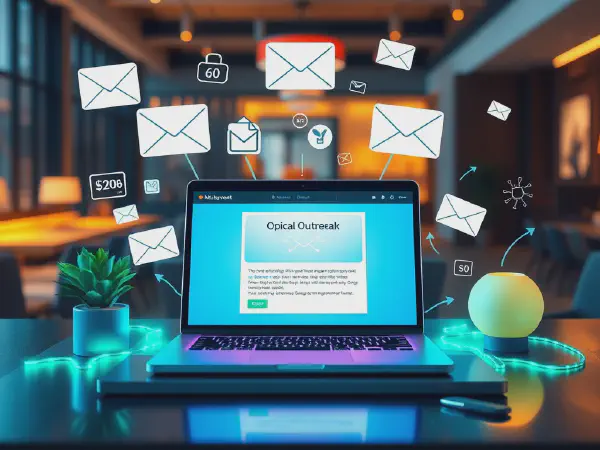Effective Cold Email Follow Up Templates That Convert

The Ultimate Guide to Cold Email Follow Up Templates
Cold emailing is a powerful strategy for outreach, lead generation, and building relationships. However, sending an initial cold email is often just the beginning. To maximize your chances of engagement and success, a well-crafted Cold Email Follow Up Template is essential. This article will explore the structure and components of an effective cold email follow-up, along with best practices, templates, measuring success, and common pitfalls to avoid.
A Cold Email Follow Up Template serves as a roadmap for your follow-up communications after an initial outreach attempt. It allows you to maintain the conversation, address any potential objections, and reinforce your message. The goal of a follow-up email is to elicit a response, whether it’s an acknowledgment, further questioning, or a meeting request. By implementing a structured follow-up process, you can improve your outreach effectiveness dramatically.
To create an efficient Cold Email Follow Up Template, it’s important to understand your audience and tailor your messaging to their specific needs and preferences. Follow up emails should exhibit clarity, relevance, and a call to action that guides the recipient toward the next logical step. Repetition, although sometimes necessary, must be approached strategically to avoid overwhelming the recipient and triggering disinterest or frustration.
In this guide, we’ll delve deep into the best practices for crafting your Cold Email Follow Up Template, effective examples based on various situations, methods for measuring success, and strategies for sidestepping common mistakes. With this comprehensive knowledge, you’ll be better equipped to enhance your cold email outreach and improve your engagement rates.
In addition, it’s essential to embrace advanced techniques that can help streamline your follow-up processes. Automation tools, A/B testing, audience segmentation, and well-designed email sequences can provide you with an edge, making your cold email outreach not just a series of random messages, but a strategic, data-driven campaign.
To increase your response rates, consider utilizing a well-crafted cold email follow up template that resonates with your audience.
Best Practices for Cold Email Follow Up
Timing is everything in email follow-ups. Research suggests that sending a follow-up email within 2 to 5 days after the initial outreach increases the chances of a response. By keeping your follow-ups timely yet respectful of the recipient’s busy schedule, you significantly enhance your engagement rates. Experiment with different timing strategies to find what works best for your audience and refine your approach.
Personalization is another critical aspect of effective follow-ups. Addressing your recipient by name, referencing specific details from your last interaction, or tailoring your message to cater to their needs demonstrates attentiveness and increases the likelihood of a response. Including relevant information or case studies can also spur engagement by showing the recipient how they can benefit from your offerings.
Compelling subject lines significantly impact open rates for your follow-up emails. Ensure that your subject line encapsulates the core intent of your message while sparking curiosity or providing value. Avoid generic phrases and instead utilize insights gained from previous communications to craft a subject line that resonates with your recipient’s interests.
Analyzing your response rates and adjusting your tactics based on the data can lead to better outcomes. Monitor engagement metrics regularly, such as open rates, click rates, and reply rates, to assess what strategies prove most effective. If something isn’t working, don’t hesitate to pivot and test new approaches in your follow-ups.
Cold Email Follow Up Template Examples
Having a variety of Cold Email Follow Up Template examples can facilitate your outreach in different contexts. For instance, templates for various industries may highlight unique service offerings, industry relevance, or market challenges specific to that sector. Customization based on insight can significantly enhance your email’s effectiveness.
Follow-up templates for sales pitches often include reminders of previous correspondence, reiterate key offerings, and highlight urgency, such as limited-time offers or opportunities. Incorporating storytelling or success stories can also build credibility and urgency in a sales context, leading to better response rates.
Networking follow-up templates focused on relationship-building emphasize gratitude, shared interests, or learning opportunities. These emails might suggest a coffee chat, asking for their insights on a subject of mutual interest, thereby reinforcing the aim to establish a meaningful connection rather than a hard sell.
For customer feedback requests, templates should clearly outline the value of the feedback being sought. Emphasize how their insights will improve products or services and create a sense of partnership. Also, make it easy for them to respond by including simple questions or a direct link to a survey.
Measuring Success of Cold Email Follow Ups
To ascertain the effectiveness of your cold email follow-ups, tracking key metrics is crucial. Some fundamental metrics include open rates, response rates, conversion rates, and click-through rates. By focusing on these metrics, you can gauge how your campaigns are performing and where there is room for improvement.
Utilize various tools for analyzing email performance, such as email tracking software or customer relationship management (CRM) systems. These tools can provide you with deep insights into how recipients interact with your emails, pinpoint their preferences, and help you make informed decisions on follow-up strategies.
Adjusting your strategies based on collected data is vital for long-term success. If a particular subject line, message format, or timing seems ineffective, be ready to pivot and try different approaches. Continuous learning and adaptation are essential components of successful cold emailing.
Understanding the buyer's journey post-email is fundamental to refining your follow-up strategy. Observe how your recipients engage with your content following your outreach, and use that data to align your follow-up emails to their stage in the buying process, thereby enhancing relevance and effectiveness.
Avoiding Common Mistakes in Cold Email Follow Ups
One common pitfall in cold email follow-ups is falling into the frequency trap. Bombarding recipients with frequent follow-ups can annoy them and deter engagement. Establish a balance by spacing out your communications strategically and always adding value in each follow-up rather than just reiterating your previous message.
Recognizing red flags in recipient responses—such as a lack of response after multiple follow-ups or generic replies—can provide insight into when to pivot your approach. Understanding when to step back or change the conversation can prevent damaging your relationship with the potential lead.
Crafting clear calls to action (CTAs) is essential for guiding your recipients toward the next steps you wish them to take. Avoid ambiguous CTAs and clearly state what you want them to do, whether it’s scheduling a meeting, replying to your email, or accessing further information.
Navigating legalities and compliance issues is crucial in cold emailing, especially concerning regulations like the GDPR or CAN-SPAM. Always ensure that your emails comply with legislation to avoid damaging your brand reputation or facing legal repercussions.
Advanced Techniques for Cold Email Follow Ups
Using automation tools can greatly enhance your follow-up strategy by allowing you to set sequences for follow-up emails based on user engagement. Automation can streamline your processes, ensuring timely follow-ups while providing personalized touches at scale.
A/B testing different templates to determine what resonates most with your audience is a powerful technique. Experiment with variations in subject lines, messaging styles, or sending time to glean insights on what drives higher engagement rates.
Segmenting your audience for targeted follow-ups allows for more relevant and personalized communication. Knowing who your recipients are and their distinct needs can enable you to tailor your messaging accordingly, leading to improved interactions.
Building an email follow-up sequence that flows logically and progressively engages the recipient can effectively nurture the relationship. A well-structured sequence gradually reveals more about your offerings, builds trust, and encourages recipients to take action at each stage.
